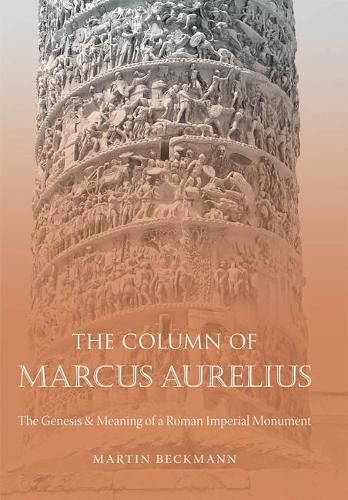Readings Newsletter
Become a Readings Member to make your shopping experience even easier.
Sign in or sign up for free!
You’re not far away from qualifying for FREE standard shipping within Australia
You’ve qualified for FREE standard shipping within Australia
The cart is loading…






One of the most important monuments of Imperial Rome and at the same time one of the most poorly understood, the Column of Marcus Aurelius has long stood in the shadow of the Column of Trajan. In The Column of Marcus Aurelius, Martin Beckmann makes a thorough study of the form, content, and meaning of this infrequently studied monument. Beckmann employs a new approach to the column, one that focuses on the process of its creation and construction, to uncover the cultural significance of the column to the Romans of the late second century A.D. Using clues from ancient sources and from the monument itself, this book traces the creative process step by step from the first decision to build the monument through the processes of planning and construction to the final carving of the column’s relief decoration. The conclusions challenge many of the widely held assumptions about the value of the column’s 700-foot-long frieze as a historical source. By reconstructing the creative process of the column’s sculpture, Beckmann opens up numerous new paths of analysis not only to the Column of Marcus Aurelius but also to Roman imperial art and architecture in general.
$9.00 standard shipping within Australia
FREE standard shipping within Australia for orders over $100.00
Express & International shipping calculated at checkout
One of the most important monuments of Imperial Rome and at the same time one of the most poorly understood, the Column of Marcus Aurelius has long stood in the shadow of the Column of Trajan. In The Column of Marcus Aurelius, Martin Beckmann makes a thorough study of the form, content, and meaning of this infrequently studied monument. Beckmann employs a new approach to the column, one that focuses on the process of its creation and construction, to uncover the cultural significance of the column to the Romans of the late second century A.D. Using clues from ancient sources and from the monument itself, this book traces the creative process step by step from the first decision to build the monument through the processes of planning and construction to the final carving of the column’s relief decoration. The conclusions challenge many of the widely held assumptions about the value of the column’s 700-foot-long frieze as a historical source. By reconstructing the creative process of the column’s sculpture, Beckmann opens up numerous new paths of analysis not only to the Column of Marcus Aurelius but also to Roman imperial art and architecture in general.